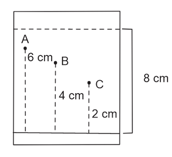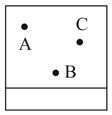Methods of Purification of Organic Compounds
Methods of Purification of Organic Compounds: Overview
This Topic covers sub-topics such as Chromatography, Thin Layer Chromatography, Sublimation, Distillation, Column Chromatography, Fractional Distillation, Steam Distillation, Principle of Chromatography and, Principle of Thin Layer Chromatography
Important Questions on Methods of Purification of Organic Compounds
Three organic compounds and were allowed to run in thin layer chromatography using hexane and gave the following result (see figure). The value of the most polar compound is _____

Which of the following statement is correct for paper chromatography?
Thin layer chromatography of a mixture shows the following observation:

The correct order of elution in the silica gel column chromatography is
Using column chromatography, mixture of two compounds ‘’ and ‘’ was separated. ‘’ eluted first, this indicates ‘’ has
Retardation factor is the fraction of analyte in _____ of chromatographic system.
Name the apparatus used in the partition chromatography.
Name the apparatus used in the fractional distillations.
List any two applications of fractional distillations.
List any two applications of column chromatography.
Mention any two applications of thin layer chromatography.
Mention any two applications of partition chromatography.
Discuss the principle of the partition chromatography.
Define retardation factor of Thin Layer Chromatography.
The fractional distillations depend on the vapour pressure of the liquid mixture. Justify.
What are the applications of chromatography?
What is the principle involved in the process of differential extraction?
Define retardation factor.
Draw the laboratory setup for steam distillation.
Which of the following apparatus is not used during distillations at reduced pressure?
Describe the setup for distillation at reduced pressure.
